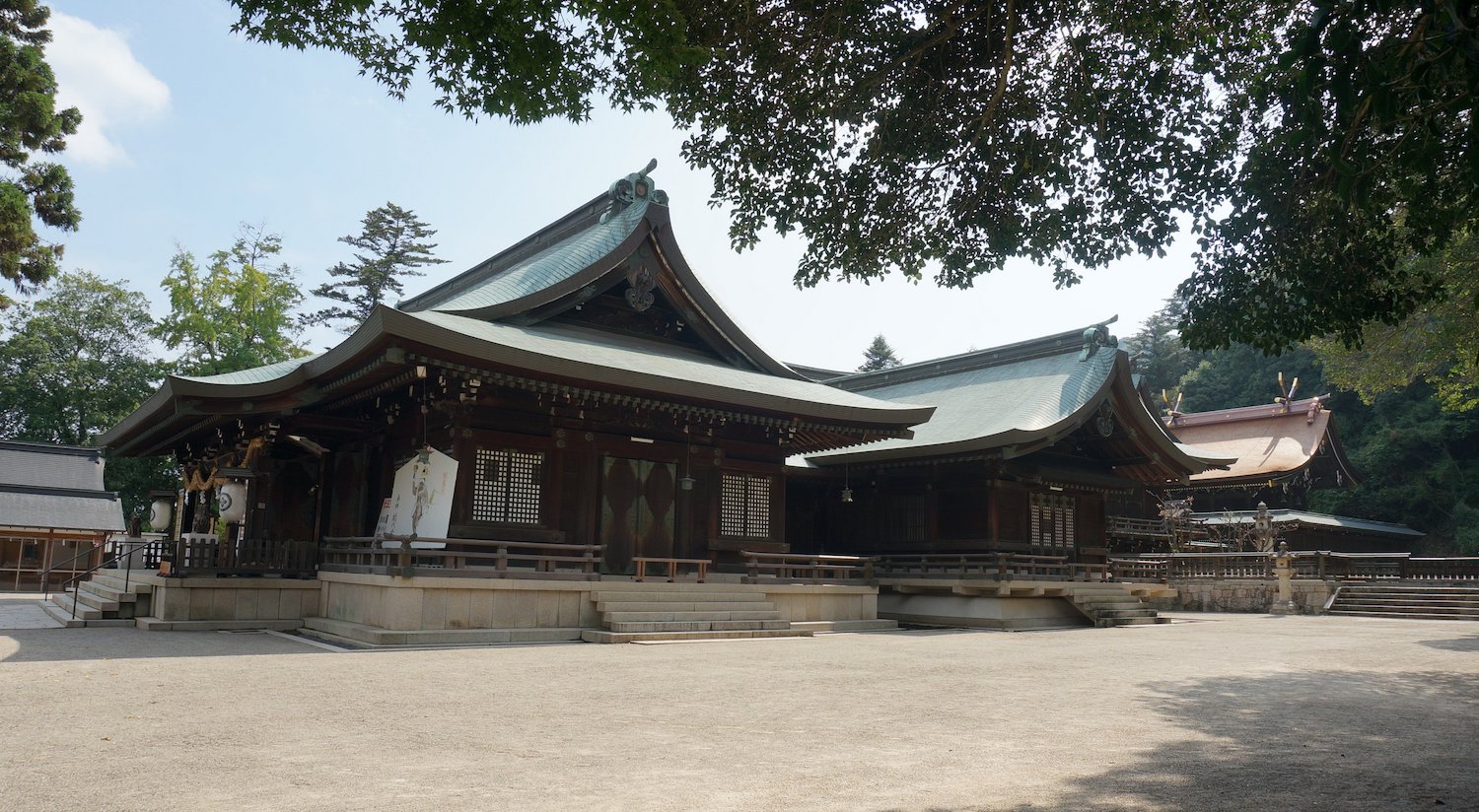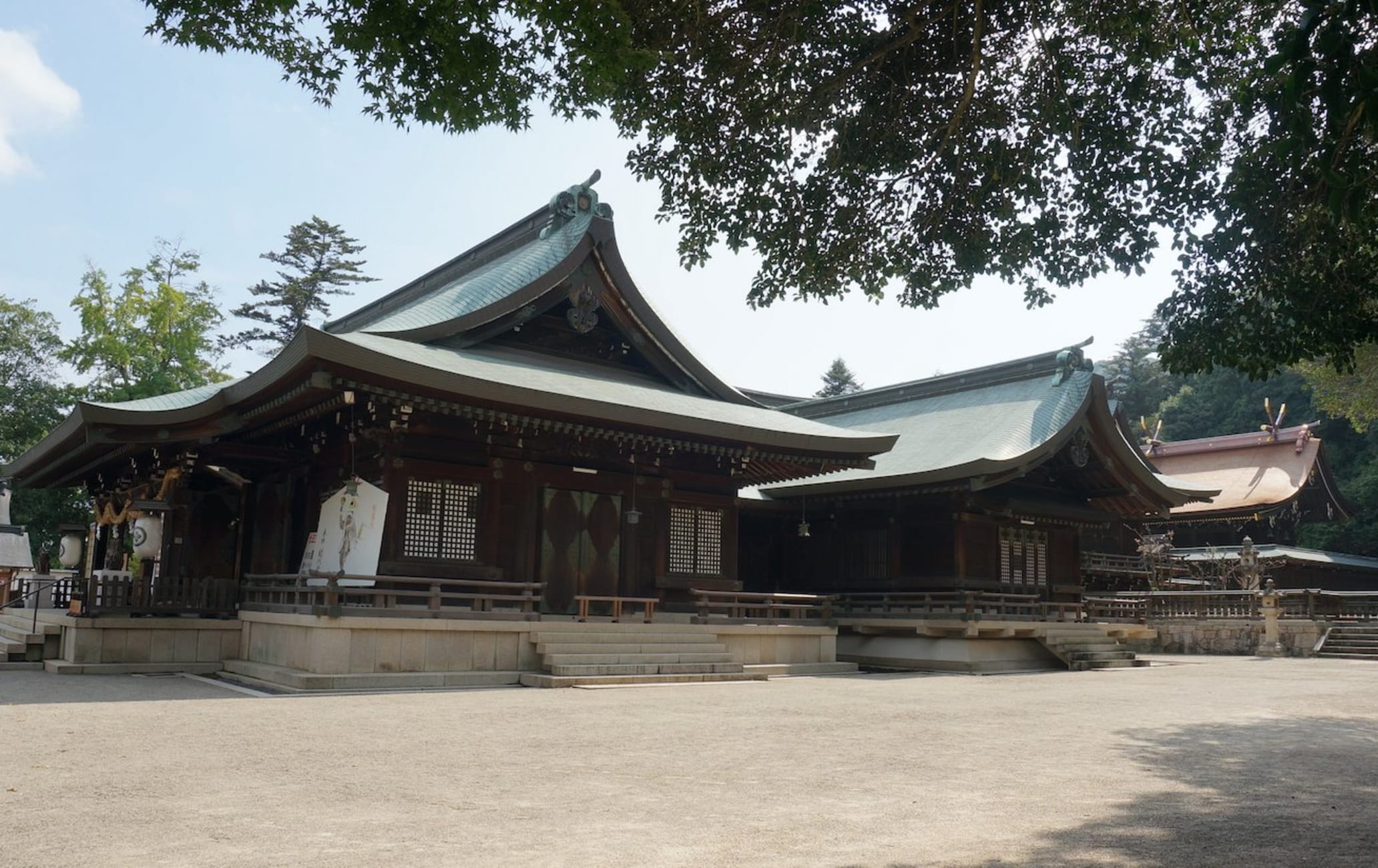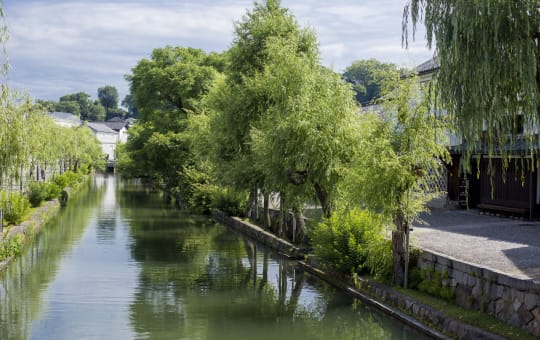Cycle an ancient kingdom's road lined with burial mounds, shrines, and fruit
Kibiji is an ancient road connecting Soja and Okayama , the central area of what was once the kingdom of Kibi. Traversing a vast plain, the path is level and ideal for cycling or walking. The path meanders past numerous sites of historical interest, but it is the scenic views of rice fields that make traveling the road so rewarding.
This area is famous for its fruit, including strawberries, peaches, berries and grapes, and during the harvest season, you should try some along the way.
Don't Miss
- Exploring the ancient Kibi Kingdom on two wheels
- The five-story pagoda at Bichu Kokubunji Temple
- Fighting demons with Momotaro
How to Get There
Take the JR Hakubi Line from Okayama Station to Soja Station, where you can pick up the road and rent a bike.

Off the train and onto a bike
One of the most enjoyable ways to experience the gently winding Kibiji road is by bicycle. If you rent one at Soja Station, your goal will be Bizen-Ichinomiya Station in the city of Okayama . You can go the opposite way as well; there are rentals available at Bizen-Ichinomiya Station.
If you ride without taking in any of the sights or stopping along the way, you can finish the route in around 90 minutes. For a more leisurely ride and to explore nearby attractions, set aside half a day.
A pagoda in the distance
One of the first sights on your course is the five-story pagoda at Bichu Kokubunji Temple. As you move away from the station cycling through fields of rice and flowers, you will notice it above the treeline. The pagoda was built in the late Edo period (1603-1867) and is the only five-storied pagoda in Okayama .
From early December through February, the pagoda is illuminated.

Burial mounds from the 4th and 5th centuries
As you cycle across the Kibi plain, you will come across numerous burial mounds, some dating back to as early as the 4th century. Tsukuriyama Burial Mound is the largest. It and other attractions along the Kibiji are signposted clearly in both Japanese and English.
The burial mound is shaped much like a pawn in chess, and there are paths that lead up to and around the summit. These give a better idea of the size and scale of the colossal 350-meter tomb.
Seeking your fortune at Okayama's most venerated shrine
After passing through farming communities and countless local temples and shrines, you will come to Kibitsu-jinja Shrine . The most important shrine in Okayama , Kibitsu-jinja is located on a hillside.

At the shrine, you may see visitors writing messages on wooden plaques and hanging them around the shrine. People do this to ask for good fortune from the gods. These wooden offering boards are available from the shrine shop for a small fee, and you can write a wish on one.
This is Peach Boy territory
Around Kibitsu-jinja Shrine, many locations are named after Kibitsuhiko no Mikoto, the legendary prince who vanquished the demon Ura and made the area a popular tourist attraction in the process. This prince is considered the model for Momotaro, or Peach Boy.
Sample the fruits of the harvest
If you're in this area in the warmer months, keep an eye out for farms selling fresh fruit.
Nomaru Engei Kibiji Farm near Soju, for example, boasts restaurants and cafes, a pizza-making studio and horseback riding in addition to its luscious strawberries.
A worthwhile side trip
A lofty side trip is Kinojo Castle—or the ruins of a fortress believe to be built around 1,300 years ago. The ruins are located on a hill around 400 meters tall and include nearly three kilometers of original stone walls and earthworks. The walk up to the ruins is pleasant, with views over the surrounding plains.
Kinojo Castle is best accessed from Soja, so it is a good idea to visit before heading to Bizen-Ichinomiya in Okayama City. Alternatively, start at Bizen-Ichinomiya and plan to end in Soja.
* The information on this page may be subject to change due to COVID-19.
































































